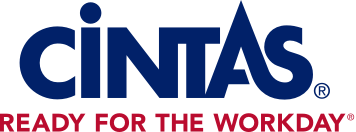Kick Cold & Flu Season to the Curb
There’s a lot to look forward to this time of year, but germs and illnesses are not one of them. Research suggests that viruses spread to the body faster in colder temperatures. To help keep employees and customers healthy and decrease the number of germs being transmitted during the colder winter months, consider the following tips:
1. Encourage Proper Hand-Hygiene
There are a large number of people who do not wash their hands properly, making it easy to transfer germs. Consider educating your staff on proper handwashing techniques, such as using effective soap, washing for at least 20 seconds, and utilizing no-touch paper towel dispensers that help decrease germ transmission. Dr. William Sawyer, a hand hygiene and infection prevention expert, teaches hand hygiene awareness using the 4 Principles of Hand Awareness, including:
1. Wash your hands when they are dirty and before eating.
2. Do NOT cough into your hands.
3. Do NOT sneeze into your hands.
4. Do NOT put your fingers into your eyes, nose or mouth.
2. Offer Additional Solutions for Hand Hygiene
Providing access to hand hygiene products outside of the restroom can help encourage employees and occupants to sanitize their hands regularly. Doing so can minimize the risk of spreading germs and show that the health and safety of building occupants is a top priority. Our Commercial Hand Sanitizer Dispenser and Stand help to promote a healthy environment by working to eliminate germs on the spot. Setup is simple, and Cintas offers regular maintenance and restocks to ensure building visitors always have access to sanitizer.
3. Brush Up on Definitions
While “cleaning” and “disinfecting” are terms often used interchangeably, they both have different meanings. Ensure that cleaning staff understands the difference between cleaning and disinfecting and the order in which each should be done. Cleaning removes dirt and debris from surfaces and disinfecting removes germs. Cleaning should be done before disinfection as germs can hide under dirt and debris. While it may seem like an insignificant difference, if either one is done incorrectly or in the wrong order, it can leave germs and bacteria lingering on surfaces.
4. Eliminate Germs on the Spot
Germs can stay infectious for several hours to days depending on the surface they land on. Don’t let a buildup of germs and bacteria linger in your facility. Identify how often your facility needs to be cleaned and disinfected, and use proper cleaning products that will effectively kill germs. It’s also important to know which cleaning chemicals can be used together and which ones should not. This not only reduces safety risks in your facility but ensures that surfaces are being cleaned correctly. Our cleaning chemicals are properly diluted at the touch of a button, and easy to read labels help to reduce this concern.
Implementing these recommendations can help you maintain a healthy facility. Encouraging good hand hygiene and implementing a strong cleaning and disinfection program can go a long way in creating a safe, welcoming environment for building occupants and guests during the colder winter months.
For more information, visit cintas.com/facilityservices.
